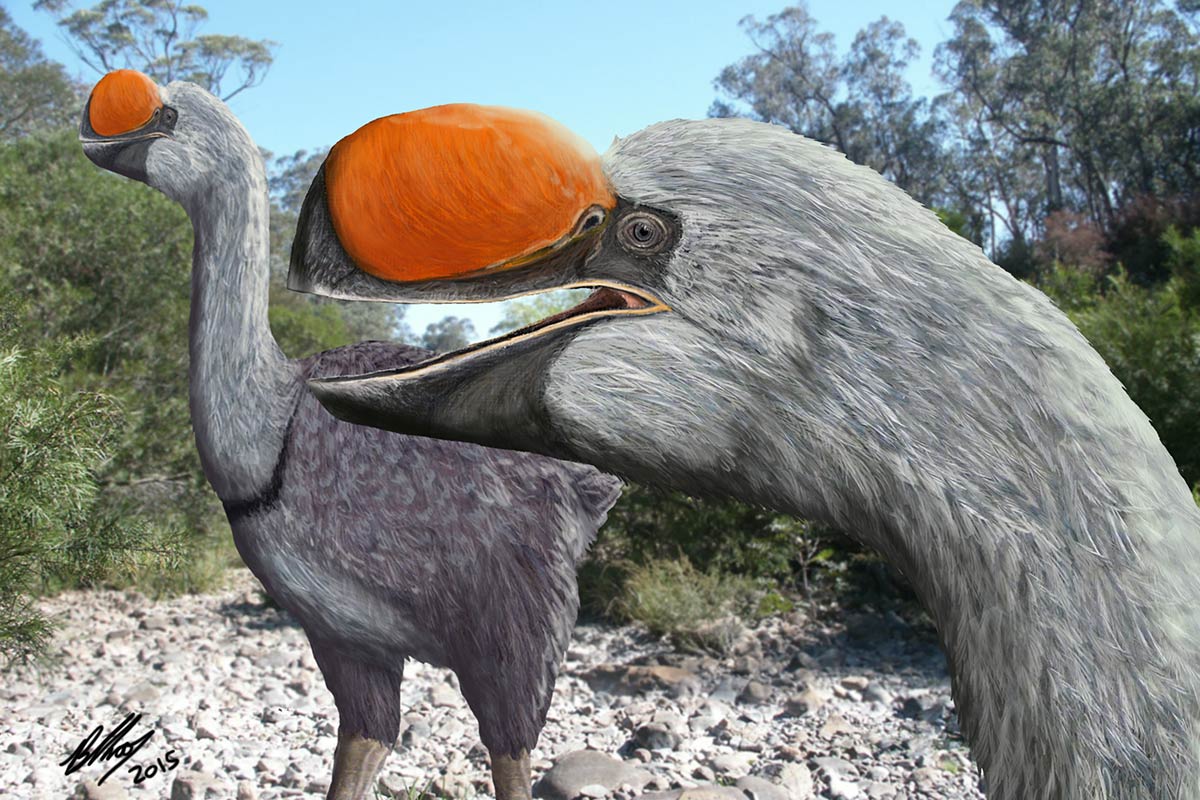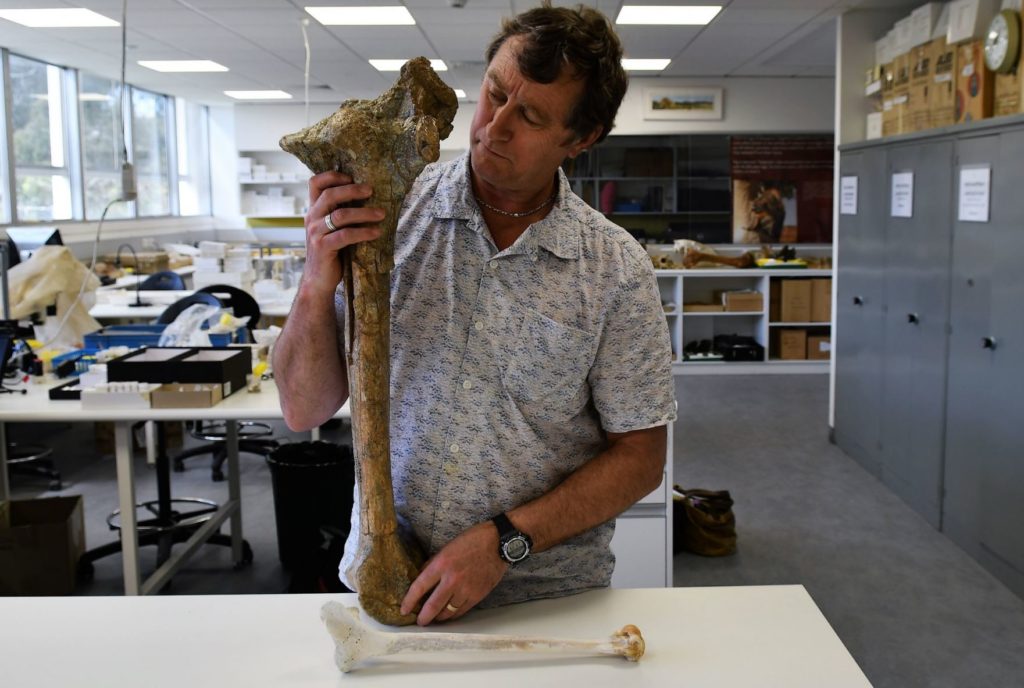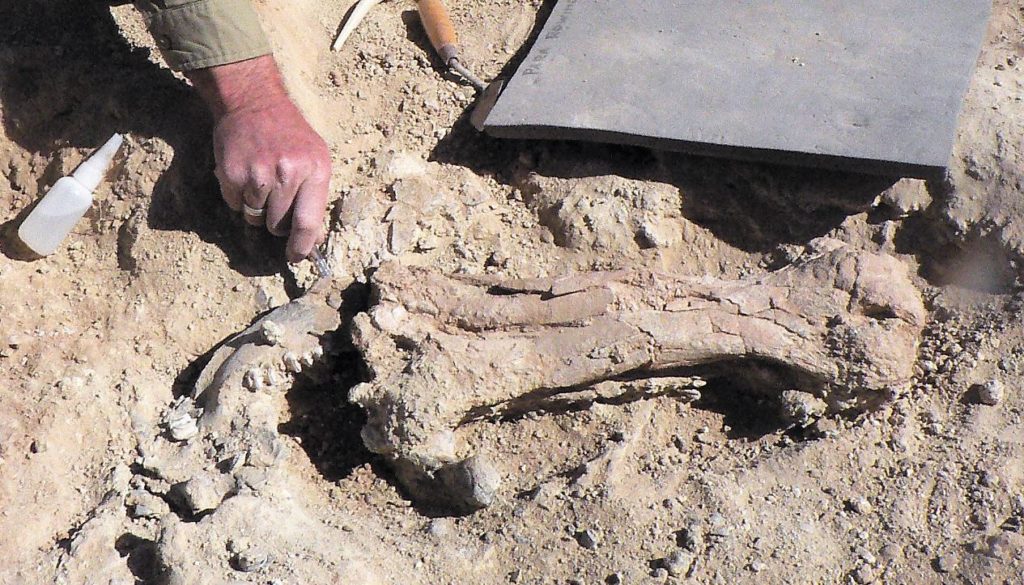
Not all fowl are chickens and ducks. Australia’s giant mihirungs (Dromornithidae) were flightless fowl that included some of the most massive birds in the world, such as the horse-sized Dromornis stirtoni which tipped the scales at 650kg. But what were they related to?
In a new analysis comparing bird fossils from throughout the world, Australasian and Argentine palaeontologists reveal the evolutionary history of these birds, with surprising results.
They have ancient evolutionary roots with the Northern Hemisphere giant Gastornis species. Together they form a major lost branch on the evolutionary tree of fowl (chickens and ducks).
This group lived in Australia from 55 million years ago until going extinct about 50,000 years ago. When the last one died, a whole order, and some of the most spectacular birds ever to have lived, disappeared.

Flinders University’s Associate Professor Trevor Worthy, who led the study with a team of palaeontologists from Finders University and Argentina, reveal the news in a study just published in the Royal Society Open Science.
How did giant birds disperse across hemispheres? The scientists suggest small flying birds gave rise to giant flightless fowl twice. Once in Australia and again in the Northern Hemisphere.
“They form a neat parallel to how we now understand the ratites (emu, ostrich and kin) evolved,” says Associate Professor Worthy, a vertebrate palaeontologist who specialises in the taxonomic circumscription and phylogenetic analyses of fossil birds of the Australasia-Pacific region.
“At the base of the family-tree of giant flightless ratites on each continent, we now know there was a small flying bird like a tinamou. These dispersed across the oceans, settled on a continent, evolving into huge and flightless birds.
One became moas in New Zealand, another the ostrich, and yet another, the emus and cassowary in Australia. Now we see that the giant fowl share a similar history.”
Despite their great size, the mihirungs and their Northern Hemisphere relatives were gentle giants.
“Mihirungs were herbivores, just like typical ducks and geese,” says co-author Professor Mike Lee, Flinders University and South Australian Museum.
“Despite a five-hundred-fold increase in body size, they retained the diets of their much smaller ancestors,” he says.

The team found other surprising relationships. Vegavis, previously interpreted as a modern duck from dinosaur-age rocks in Antarctica, was found to be much more primitive, in line with its great age.
“This helps bring the fossil history and that inferred from DNA closer together,” Associate Professor Worthy says.
Moreover, the extinct flamingo ducks (Presbyornithidae), only newly recognised as having existed in Australia, are shown to also be more primitive than believed till now. They are shown to be the distant cousins of modern geese and ducks.
“This makes sense because they evolved long before typical waterfowl and bear little similarity to them” says co-author Warren Handley, a Flinders University PhD candidate.
However, in a surprising twist, the team found that the largest flightless bird of South America, Brontornis, is not remotely related to fowl, as some recent studies had advocated.
Instead, this 300kg giant was actually a slower relative of the terror-birds (Phorusrhacids), which replaced dinosaurs as the supreme predators of that continent.
“Perhaps the terror-birds meant there was no place for sluggish giant fowl in South America. Only the fast-running rheas and kin could live with them,” says co-author Dr Federico Degrange, from the Centro de Investigaciones en Ciencias de la Tierra, Argentina.

